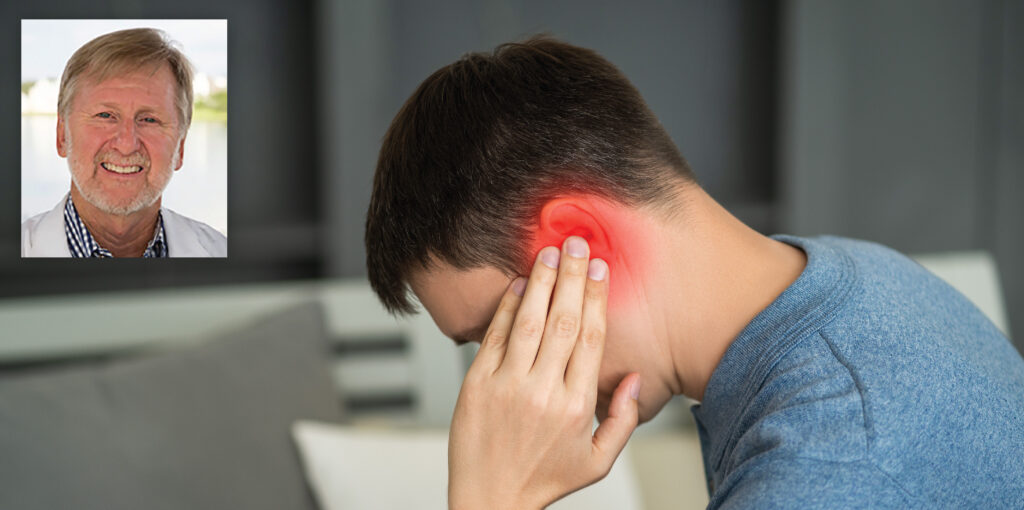It’s All In Your Head: What is Making My Ear Hurt?
One of the most common complaints that bring patients to my office as an Ear Nose and Throat specialist is ear pain. Whether the pain is stabbing, dull, aching, short duration, persisting for a long time, or any combination of those. I have encountered all of those in the nearly 40 years since I completed my training.
Most of us had ear infections in childhood. I believe that is the main reason so many adults assume their pain is an ear infection and expect treatment will require antibiotics. And while ear infections do occur in adults, by far most people over age 50 who have ear pain do not have infection as the primary cause.
Infections can occur in the outer ear canal, usually involving the skin there. A very common reason is water getting behind earwax which leads to skin swelling and tenderness. This is commonly known as swimmer’s ear and is best treated first by prevention – getting ears dry after swimming or showers – then ear drops as needed.
Infections also occur in the air pocket behind the ear drum and can certainly cause pain. This condition is called otitis media and is much more common in children than adults. The underlying source of this problem is the ventilation system from the back of the nose to the ear, the eustachian tube, being plugged due to an allergy or a head cold. In addition to pain, this type of ear infection is usually associated with pressure and muffled hearing. Treatments for this condition can include antibiotics as well as medications to decrease swelling and open up the eustachian tubes.
Additionally, long-standing partial blockage of the eustachian tubes leads to a pressure sensation that is similar to what passengers in a plane can experience. Occasionally there is some sharp pains, but this condition generally has a dull ache. Often holding your nose and blowing hard with your lips closed may force air off the eustachian tubes and pop them open.
There are also common issues not related to infections that lead to pain in and around the ears. And again, these conditions are seen by physicians much more often than the infections that I previously mentioned. The first cause of this type of pain is due to problems in the jaw joint. The jaw joint, named the temporomandibular joint, is frequently shortened to TMJ. It is very complex with more possible movements than the human knee. The front wall of an ear is the back wall of the TMJ and any inflammation there is a very frequent cause of shooting sharp pains going into the ear. A physical examination of the area including palpation will often pinpoint tender areas that are trigger points. Some are related to clicking or popping with chewing or loss of teeth that are shock absorbers. Treatments can start with the application of local heat, cold packs, or massage to the area. Sometimes diet changes as well as dental evaluation are helpful.
Chronic ear pain surprisingly can come from the neck. In between each of the bony vertebrae surrounding the spinal cord are nerves that go to different parts of the body. Most of us are aware that if a nerve low in the neck is compressed or pinched, there can be pain going down the arms. The same goes for nerves in the low back which shoot pain down the legs. Most of these nerves tend to angle down. However, between the very first vertebra under the skull, C-1 and C-2, just below is a relatively large nerve going to the ear region on both sides. Any compression of the nerve roots here results in pain that our brain and sensory system interpret is coming from the ears. Treatment of ear pain from this source can involve massage therapy, chiropractic manipulations, physical therapy as well as anti-inflammatories.
In my experience, for adults who come to my office with pain in and around the ears, at least 75% of the time, it is not due to infection but due to the neck or jaw joint. So, before thinking you have an ear infection and may need an antibiotic, use your hands to try to feel what may be triggering the problem. Of course, having a thorough examination by a trained medical professional will pinpoint the source of the problem so it can be treated appropriately.
